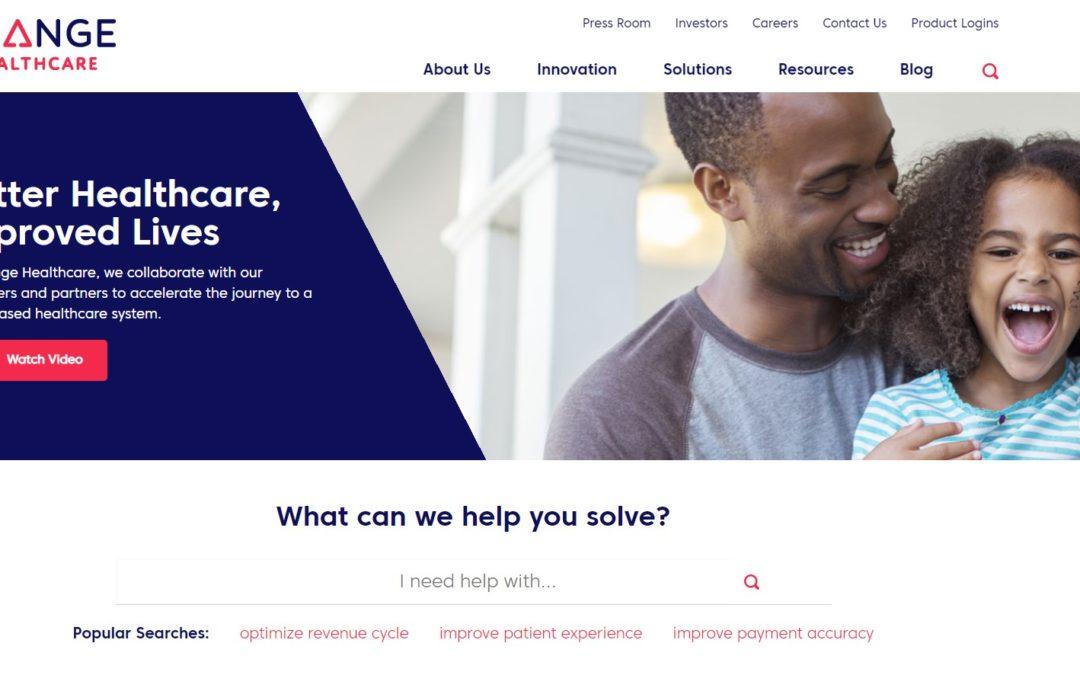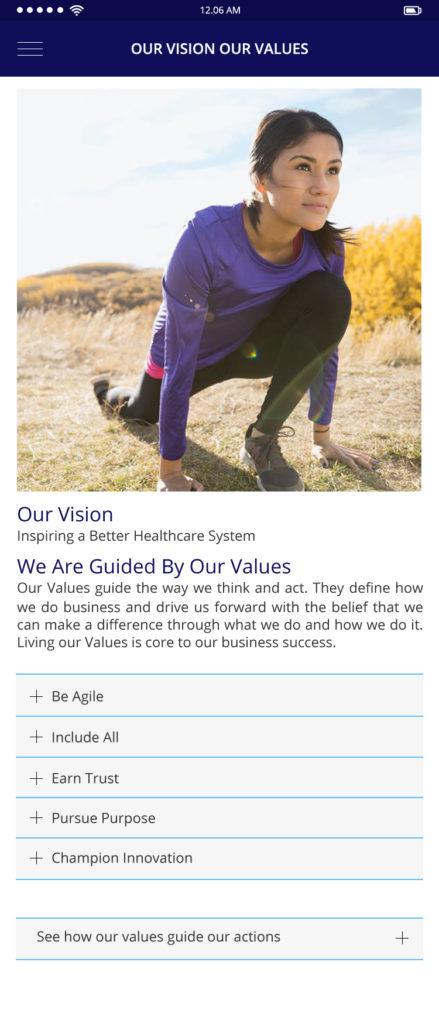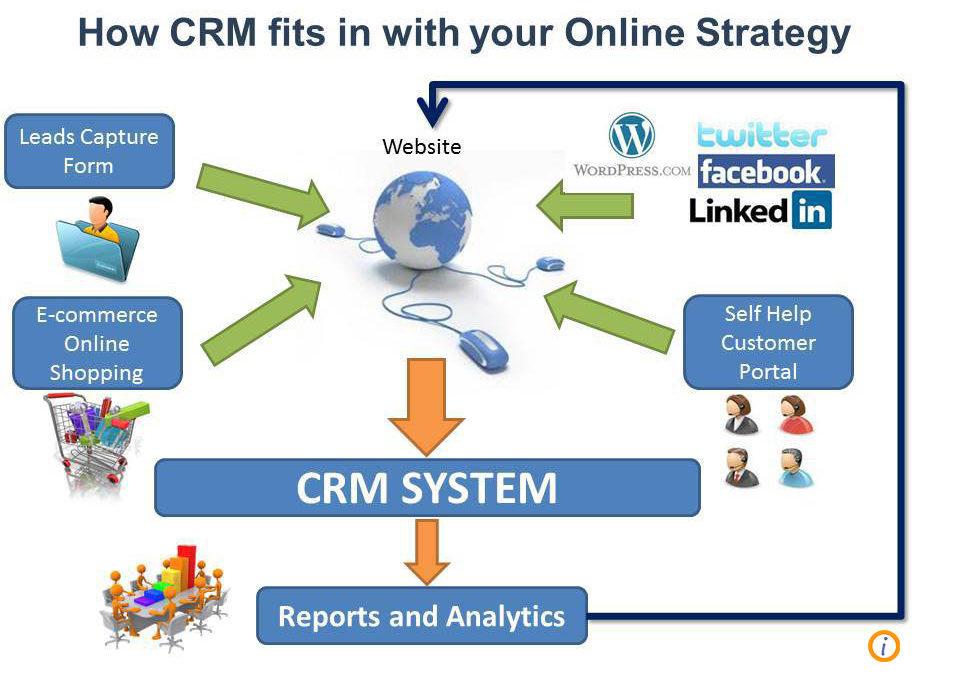
by Marketing | Feb 23, 2020 | Commercial, Healthcare
Last fall, McKesson’s Change Healthcare group came to us with a challenge – Create an app that used the content from their new WordPress website. Essentially, how can we have content updates made in one location make updates to mobile apps at the same time. We had just finished upgrading their WordPress website and we were excited to see what we could accomplish for them next.
The site update went well, and as in many cases, we had taken over where another team couldn’t finish. We first fixed their issues, then made necessary updates, and finished the project launching their site in the time frame they wanted. Next Change Healthcare wanted to follow it up with a mobile app that mirrored the new website. No problem for us, but there was the requirement of making it easy on the content publishers/editors to update blog posts and pages on all platforms.
Goal: Create a mobile application to mimic the content and layout of the primary Change Healthcare WordPress site.
Challenges: It was determined that a great option would be if the editors at Change Healthcare could update content in WordPress and it would simultaneously update the content in the mobile app. We needed to find the path to have WordPress content updates trigger and share the data with the mobile apps. There were sister apps developed – one for Apple and the other Android, so the content must be pushed to those to apps after an update was made.
Solution: iCita created a methdology, design and plan for the project. We then implemented changes to the WordPress structure, and created mobile apps for both Android an iPhone. Content is stored in WordPress and distributed to the apps when updates are made.
Our Approach Is Different
- We listen
- Work together
- Measure success
We know how you feel, so let’s talk
Copyright © 2022 iCita LLC. All rights reserved.
Sitemap

by Thomas Smidt | Dec 13, 2019 | Commercial, Healthcare
B2B marketing is currently being revolutionized by the onset of account-based marketing (ABM). Of course, we’ve heard of marketing being “revolutionized” before, so what’s different about ABM?
The true promise of ABM – deeper engagement at your most valuable target accounts, more cross-selling and up-selling opportunities within your existing accounts, and greater buy-in from all key stakeholders and decision-makers – is the holy grail of marketing. And it is only made possible by creating, developing, and leveraging high-quality account-based content (ABC).
Let’s take a closer look at exactly how to create, manage, and deploy truly effective account-based content.
PERSONALIZING CONTENT QUICKLY AND EFFECTIVELY WITH ACCOUNT-BASED CONTENT (ABC)
If traditional marketing is like sardine fishing with a wide net, account-based marketing is spearfishing for whales. It involves profiling and targeting the specific ideal accounts that are most likely to close and are most beneficial to your portfolio. But to target these accounts – and more specifically, to target the multiple key decision-makers and stakeholders at each level of the account that actually influence the decision whether or not to close the deal – you need highly granular specificity and insight into the account’s organization and hierarchy. Essentially, you need good market intelligence data…
Read more at Pardot.com
Our Approach Is Different
- We listen
- Work together
- Measure success
We know how you feel, so let’s talk
Copyright © 2022 iCita LLC. All rights reserved.
Sitemap

by Thomas Smidt | Dec 13, 2019 | Commercial, Healthcare, Public Sector
Today, most companies have some form of software to help them keep track of and manage customers. And while it is important to have a system to capture customer data, especially in today’s multichannel retail world, having a database of customer names, contact information and purchase history is not enough. If you truly value your customers, you need to not just focus on customer management but on building long-term relationships.
- Make sure your customer data is reliable and up to date. A CRM system is only as good as the data that’s in it. So constantly make sure any data entered into your CRM system is accurate – and regularly review and scrub customer data, to eliminate redundancies.
- See that everyone who interacts with customers knows the history. It is important to have a detailed summary of the customer’s purchase history including dates, quantities and terms. Customers will often want to repeat a previous order and nothing looks as bad as not knowing what and when.
- Know how and where your customers are interacting with you. Today consumers can reach out to a company via email, social media, chat, bots, or the tried and true phone call. If [a] company really values [its] customers, [it] will be there.
- Understand where customers are in the purchase process/cycle. “People buy when they’re ready to buy, not when you’re ready to sell,” says Clate Mask, cofounder and CEO, Infusionsoft, a provider of sales & marketing software. “By using a CRM tool to organize and analyze lead data, you can determine who is a hot lead, and who is in need of nurturing so you can guide them towards making a purchase.”
- Provide the personalization customers crave. Sending relevant, personalized emails based on timely and accurate customer data can increase click-through rates by up to 50 percent.
- Eliminate pain points. “Get serious about fixing the things that frustrate your customers,” says Robert Wollan, senior managing director, Accenture Strategy. “Over half of the top 10 most frustrating customer issues are the same as they were over a decade ago. Customers actually make it easy for brands to identify frustrating experiences if they are paying attention and will do something about it.
- Don’t underestimate the value of human interaction. “Human interaction is a vital component of customer satisfaction, even [or especially] in the digital age,” says Wollan. “Eighty-three percent of U.S. consumers say they prefer dealing with human beings over digital channels to solve customer services issues and get advice.”
- Ensure that customer service representatives are well-trained. “The first line of contact for a customer’s service experience in a multichannel environment is a company’s customer service representatives,” says Lara Ponomareff, customer contact practice leader
- Have your sales, marketing and customer service departments share customer data. While it can take time to create a shared repository of data between sales and marketing [and customer service], you’ll gain the ability to understand your customer’s actions and preferences better than ever before [if you do].
- Be mobile. Implement customer support software that can be accessed across multiple devices, such as smartphones and tablets, to enable mobile support anywhere there is an internet connection.
- Follow up with customers. Follow-up is key to building a lasting customer relationship, and it doesn’t have to be a hassle. Automating customer follow-up can deepen a customer relationship by allowing you to send timely and relevant information to the right people while you stay focused on running your business.

by Thomas Smidt | Sep 2, 2019 | Healthcare
It does sound like Salesforce software is the fix-all for all your sales woes, right? It might be. Salesforce is possibly the most popular cloud-based CRM system in the market today. It is best known for its CRM solutions, which include Sales Cloud, Marketing Cloud, Service Cloud, Analytics Cloud, and App Cloud, among others.
However, Salesforce and your success with it really depends on how you use its features. A CRM system will inherently benefit your business, regardless of size. According to studies, a dollar spent on a CRM system gets you $5.60 back. Sales practitioners know this; and thus, the CRM market is projected to be worth $37 billion this year.
This demand is not about people getting on the bandwagon. It is testament to the importance of a reliable CRM system, such as the Salesforce software, to your sales and overall business operations.
Introduction to Salesforce
Salesforce, the company, is best known for revolutionizing the CRM industry through its innovative use of cloud computing. Because of its efforts, it has made CRM affordable for most businesses.
There are no set-up fees nor hardware/ software requirements needed. You won’t have to maintain nor upgrade your CRM system. You can add users, features and capacities when needed. It is accessible from multiple devices, anywhere you are.
Salesforce has made CRM within reach; there’s practically no reason to miss out on making the most of it.
Read more at Tenfold















